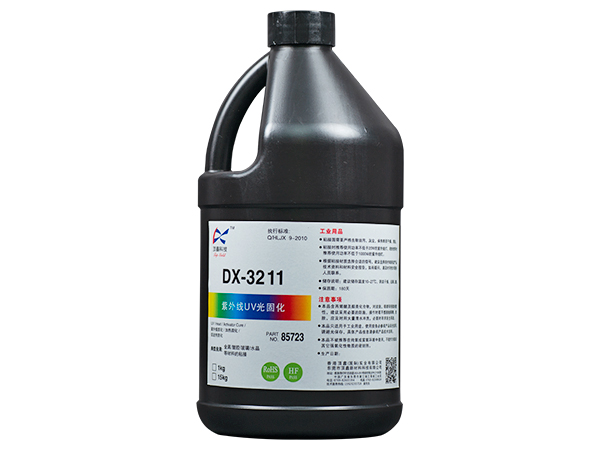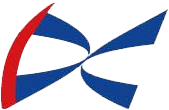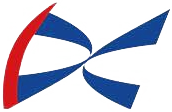Product Description:
DX3211 Has the following performance
| Technology |
Acrylic acid |
| Chemical type |
Acrylic modified polyurethane |
| Appearance (uncured) |
Transparent liquid |
| Composition |
Single component - no need to mix |
| Viscosity |
Medium viscosity, thixotropy |
| Curing method |
Ultraviolet/Visible Light |
| Advantages of solidification |
Production - Rapid curing |
| Application |
Adhesive bonding |
| Resilience |
Improved load-bearing capacity and seismic resistance |
DX3211 is mainly used for polycarbonate bonding, without causing stress cracking on the usual substrate, and its toughness improves load-bearing and seismic resistance. Has excellent bonding ability for glass, various plastics, and most metals. The thixotropic properties reduce the flow of liquid 3103 after glue application and before solidification.
Material properties before curing:
| Specific gravity @ 25 ℃ |
1.13 |
| Refractive index |
1.48 |
| flash point-see MSDS |
| Viscosity,Brookfield-RVT,25℃,mPa·s(cP): |
| rotor 5,rotational speed 20rpm |
8000-14500 |
Typical curing characteristics:
DX3211 will cure under sufficiently strong ultraviolet and/or visible light. The use of 220 to 260 nm ultraviolet light is beneficial for surface curing. The curing speed and final depth are affected by light intensity, pop distribution, irradiation time, and substrate transmittance. Note: The ultraviolet intensity mentioned here was measured at 365nm.
Stress cracking
Apply the adhesive onto the polycarbonate bent strip, measuring 6.4cm x 13mm x 3mm, and bend it to a certain stress level.
Stress cracking, ASTM D 3929, Minutes:
17 N/mm2 stress on the strip:>15
Fixed time
When the shear strength reaches 0.1N/mm2, the required time is the initial solidification time
UV fixed time, seconds:
Black light, Zeta @ 7400 light source:
6 mW/cm2,standard @365nm,:≤18
UV fixed time, polycarbonate, seconds:
Metal halide lamp (iron), Zeta@ 7400:
No electrode system, D lamp 30 mW/cm2, standard @ 365nm, 5:10
Electrodeless system, H-lamp 50 mW/cm2, standard @ 365nm,:<5
No electrode system, D lamp 50 mW/cm2, standard @ 365nm,:<5
Typical properties of cured material:
Curing @ 30 mW/cm2, standard @ 365nm, using a metal halide lamp with a glass lampshade for 80 seconds:
Physical performance:
| Hardness, ISO 868, Xiao's family |
51 |
| Refractive index |
1.5 |
| Water absorption rate, ISO 62,%: |
| 2 hours, in boiling water |
2.72 |
| Elongation, when broken, ISO 527-3,% |
260 |
| Fracture elongation, ISO 527-3 |
N/mm2 |
207 |
| (Psi) |
(30000) |
| Tensile strength at break, ISO 527-3 |
N/mm |
17 |
| (Psi) |
(2500) |
Electrical performance:
| Surface Resistivity,IEC 60093,cm |
8.7×10 |
| Volume resistivity,IEC 60093,cm |
8.9×10 |
| dielectric strength IEC 60243-1,kV/mm |
24 |
| Dielectric constant/loss,IEC 60250: |
100Hz |
5.69/0.04 |
| 1 kHz |
5.61/0.02 |
| 1 MHz |
5.13/0.04 |
Material properties after curing:
Adhesive performance
Curing @ 30 mW/cm2, standard @ 365nm, using a metal halide lamp for 80 seconds (sample cured within a 0.5mm gap).
Shear strength, ISO 4587:
Polycarbonate
N/mm2:11
(Psi):(1600)
Precautions:
This product is not suitable for use in pure oxygen and/or oxygen rich environments, and cannot be used as a sealing material for chlorine gas or other strongly oxidizing substances.
For safety precautions related to this product, please refer to Changying's Material Safety Data Sheet (MSDS).
User Guide:
1、 This product has photosensitivity. When storing, it should be kept away from sunlight, ultraviolet light, and artificial light sources.
2、 This product should be coated with black rubber hose.
3、 To achieve the best bonding performance, the surface of the material being bonded should be clean and free of grease.
4、 The curing depth depends on the intensity of the light source, distance from the light source, curing depth, bonding gap, and material transmittance.
5、 The recommended minimum light intensity for the bonding area is 5 mW/cm2, and the required time is 4-5 times the initial curing time under the same light intensity.
6、 To achieve surface dryness, higher intensity ultraviolet radiation (100 mW/cm2) is required.
7、 For temperature sensitive substrates, such as thermoplastic, cooling is required.
8、 Crystalline and semi crystalline thermoplastic materials need to be checked for stress cracking caused by contact adhesive.
9、 Excessive uncured adhesive can be wiped away by organic solvents (such as acetone).
10、 Adhesive components should be cooled before bearing any load.
Storage conditions:
The product is stored in its unopened original packaging and kept in a cool and dry place. The storage method is indicated on the outer packaging of the product.
Ideal storage conditions: 8 ℃ to 21 ℃. If the product is stored at temperatures below 8 ℃ or above 28 ℃, it may affect its performance. The product used outside the packaging box may be contaminated during use. To avoid contaminating unused glue, do not pour any glue back into the original packaging. Our company will not be responsible for products that have been contaminated or stored improperly as mentioned above. If you need more information, please contact the company's technical service department or customer service department.




